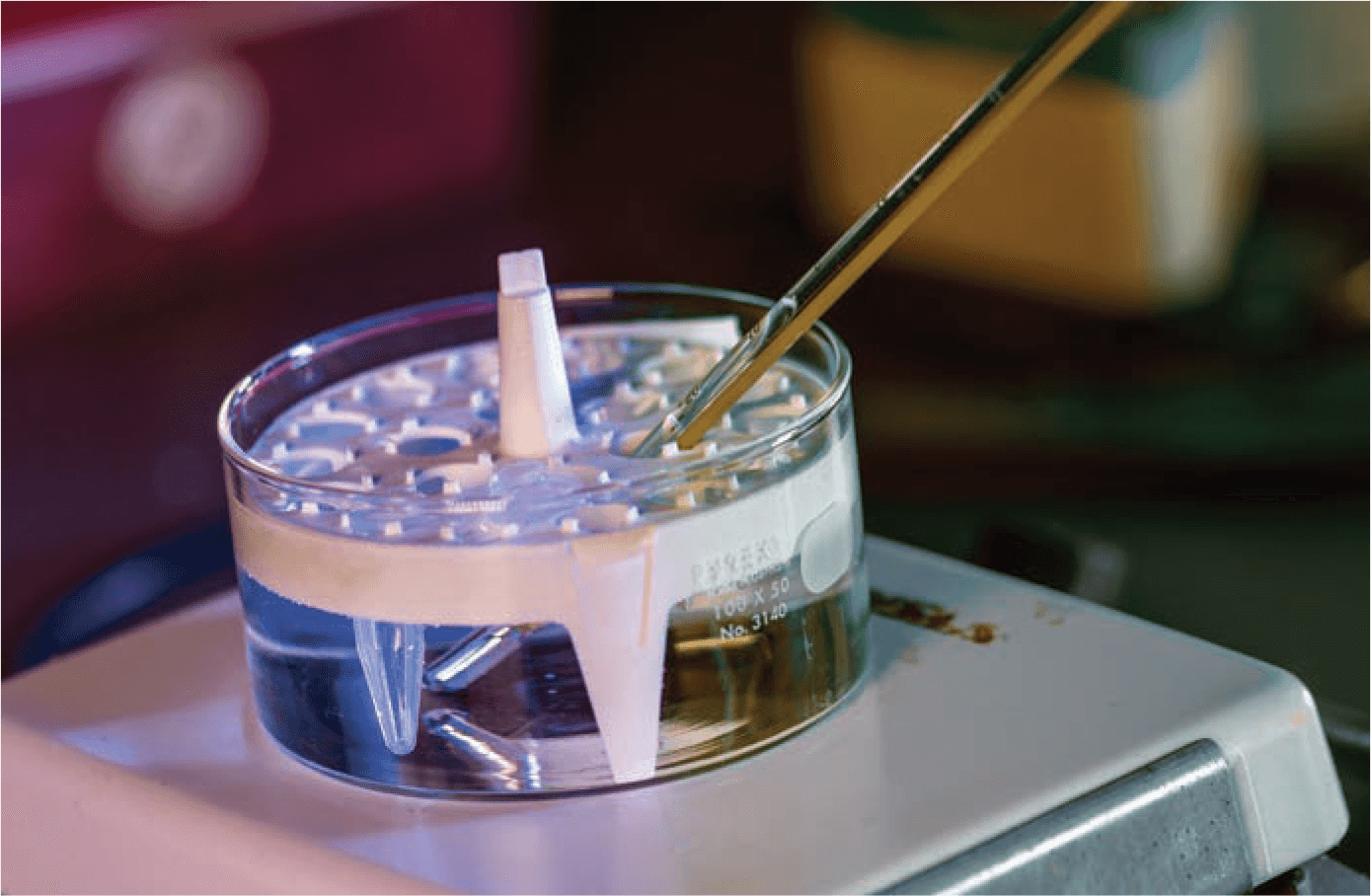A Breakthrough in Bioengineering

The field of bone tissue engineering might be getting a facelift. Rice University bioengineers have created a hydrogel that instantly turns from liquid to semisolid at close to body temperature—and then degrades at precisely the right pace.
Brendan Watson, a graduate student in the laboratory of Antonios Mikos, Ph.D., Rice University’s Louis Calder Professor of Bioengineering and Chemical and Biomolecular Engineering, worked to develop a “smart” hydrogel system for the purposes of bone tissue engineering, or reconstruction. The gel has shown potential as a bioscaffold to support the regrowth of bone and other three-dimensional tissues in a patient’s body, using the patient’s own cells to seed the process.
The hydrogel created in Mikos’ lab is a liquid at room temperature, but when injected into a patient, it becomes a gel that fills and stabilizes a bone defect until degradation, while natural tissue grows to replace it.
The new material, which was detailed in a study published in the American Chemical Society Journal Biomacromolecules, represents a bold step forward in the field of bone tissue engineering.
“We’re looking to apply this technology to bone tissue in general,” said Watson, the paper’s lead author. “Initially, this was designed specifically for non load-bearing constructs and craniofacial reconstruction, but the potential applications are much broader.”
“This study describes the development of a novel thermogelling hydrogel for stem cell delivery that can be injected into skeletal defects to induce bone regeneration and that can be degraded and eliminated from the body as new bone tissue forms and matures,” added Mikos.
Watson’s hydrogel is a thermogelling polymer, which lends itself well to cellular work courtesy of a large makeup that is comprised mostly of water. “It resembles the extracellular matrix, the natural matrix within the body—these cells can grow in an environment similar to what they would naturally grow in. We specifically work on thermogelling polymers because of their instantaneous transition: whenever you increase the temperature of the polymer, this allows you to encapsulate cells within the hydrogel and have them form inside of whatever defect your filling.”
While stability of the hydrogel is necessary to build tissue, acting as a scaffold for cells to take root and proliferate, over time it needs to be replaced by organic tissue and bone. A novel approach to another obstacle in the field of thermogelling polymers, the inability of those gels to degrade in the body on any reasonable timescale, Watson’s hydrogel is designed specifically for its own timely destruction. In addition, a patient’s own stem cells can be encapsulated in the hydrogel in order to provide the opportunity for a quicker healing process.
“One of the advantages of the system is that it can be introduced into the body with minimal surgical intervention,” said Mikos. “The ability to solidify a gel without the use of any initiators or catalysts, which can elicit an inflammatory response, allows us to have a system that serves as a delivery vehicle for cell populations and bioactive molecules.”
Tackling the stabilization of thermogelling polymers, as well as the issue of degradation, was a task that would define the course of Watson’s academic career, who is pursing both a Rice doctorate and a medical degree in a joint program with Baylor College of Medicine. “The initial idea, taking into account all of these design parameters, started right around the beginning of my Ph.D., which was four and a half years ago,” he reflected. “I felt like it was doable to try and address these two major hurdles in the thermogelling polymer realm and make them viable for cellular applications.” Rice University and Baylor College of Medicine have collaborated for over 30 years to jointly administer the M.D./Ph.D. Medical Scientist Training Program, where students receive an M.D. from Baylor and Ph.D. in bioengineering from Rice University.
Successfully coordinating all of these elements would not have been possible without the experience and expertise of Watson’s colleagues and coauthors, including Paul Engel, Ph.D., professor in the Department of Chemistry at Rice University, and F. Kurtis Kasper, Ph.D., a senior faculty fellow in bioengineering. “It took over
the course of three years to successfully synthesize what I set out to synthesize and incorporate all of these aspects,” said Watson, a testament to the painstaking process of refining the hydrogel. “It looks like we may have just decided to try something and found that, ‘Hey, it worked!’ But that wasn’t the case.”
Displaying enthusiasm for the clinical potential of his laboratory’s research, Mikos is convinced that this success story showcases the benefits of collaboration. “What we have tried to do in our laboratory over the years is to design materials to address an unmet clinical need,” he concluded. “The development of materials like this requires having knowledge of material science but also biology and medicine. Having a student like Brendan, who is a part of Rice and Baylor’s M.D./Ph.D. Medical Scientist Training Program, is a tremendous asset.”




